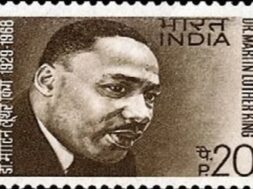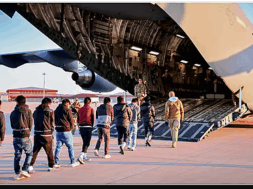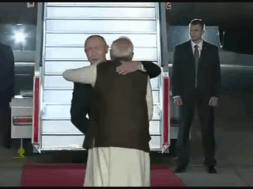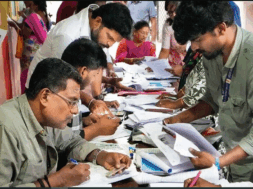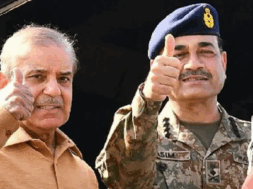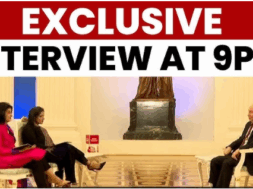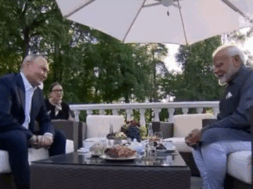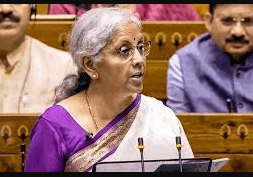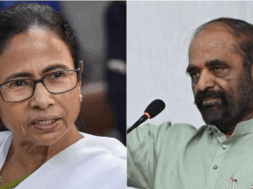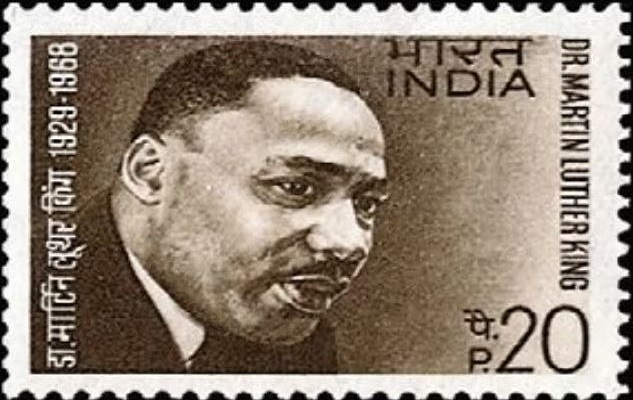
Martin Luther King Jr. Day: Why India visit was a pilgrimage for the ‘King of Hope’
(Guru Prakash Paswan)
The walk to, in and around the ‘Stone of Hope’ in Washington D.C. in the United States (US) is an endearing ‘pilgrim’ spot of why and how Dr. Martin Luther King Jr. came to be. It is also referred to as a special place for reflection and contemplation dedicated to one of the world’s most popular civil rights ambassadors with its quiet ambience. It displays King’s words wherein he says, ‘out of a mountain of despair, a stone of hope’. This truly puts into perspective the life and message of King.
Officially, King was born on 15 January, 1929 in Atlanta. However, Martin Luther King (MLK) day is marked on the 3rd Monday of every year around his birth date. This year it falls on 16 January.
In 1983, US President Ronald Reagan signed the famous King Holiday Bill into law that designates this day to be marked in honour of King after several decades of struggle. Today, across 50 states in America, this day is celebrated as a ‘day on not off’. King’s family and his followers have called upon citizens around the world to dedicate this day to the service of others. That is why it is popularly hailed as a national day of service in the US.
King was an apostle of hope and assertion through non-violence. He stood for anything and everything to mainstream black communities ‘urgently’ in the United States and he did this successfully by empowering the populace both within and outside the US by sensitising them to learn from mistakes.
King learnt his lessons from India and, specifically, Mahatma Gandhi, about charting a non-violent resistance to the issues of racial segregation in the United States. King did not meet Gandhi but was enamoured by his persona and wanted to make all efforts to ‘throw off racialism and imperialism’ in all its forms.
At a time when transnational ideas are adopted with the push of a digital button in today’s times, King wanted to visit India and understand first hand what it means to pursue the values of kindness, compassion and the techniques of non-violence.
There are three important reasons for King’s visit to India. One is, of course, to understand Mahatma Gandhi and his cause of non-violence in and through his contemporaries, two, understand the distinctions that arose through caste-based discrimination, how far India has come, and three, to raise his profile as a ‘king of hope’ on the international stage, especially through the lens of Asia, America and Africa as an ambassador to weed out any form of man-made divisions.
King came to India as a pilgrim. He famously said, ‘To other countries I may go as a tourist, but to India I come as a pilgrim’. Writings on his tour to India further show that the King regards India for her ‘spiritual qualities’. He came to India after surviving an assassination attempt. History also shows that King is known for leading the Montgomery bus boycott and is said to have emphatically stated how Mahatma Gandhi’s technique of non-violence was a guiding light for social change for the struggles in Montgomery and Alabama.
Some papers that we have come across also argue that King’s resonance with Gandhi was shortlived because King had not met Gandhi. However, his love for India and Gandhi cannot be missed due to all the efforts he made to come to India and undertake learning from India’s grassroots. It would be apt to say India mattered to King.
Landing on 11 February, 1959, King travelled to several cities in India-which included Delhi, Madras(Chennai), Calcutta(Kolkata), Bihar, Trivandrum, Ahmedabad and Mumbai on what was a month-long tour. King cherished his pilgrimage immensely and is said to have been grateful to have resided in the places of importance associated with Mahatma Gandhi. In one instance, in reference to his stay in Mumbai, hesaid, “To have the opportunity of sleeping in the house where Gandhiji slept is really an experience I will never forget”. Academic analysis of King’s visit has been termed in the west as a ‘unique spiritual catharsis’.
It is pertinent to note that not just King but several leaders in Africa were inspired by Mahatma Gandhi. Ghana’s Kwame Nkrumah hosted the All African Peoples’ Conference in Accra with the central aim of collectively formulating ‘the Gandhian tactics and strategy of the African Non-violent Revolution’.
King’s interactions included stalwarts like Vinoba Bhave and Jayaprakash Narayan. He also visited the famous Bodh Gaya temple in Bihar and Shantiniketan in Kolkata. In 2008-09, Bihar’s Gandhi Museum displayed a panel of photographs of King’s civil rights march from Selma to Montgomery. When King visited Chennai, he was received by then Chief Minister K. Kamaraj and Tamil Nadu’s first dalit home minister, P. Kakkan, who remains a great study of conduct of clean and progressive politics in India. In fact, we saw a rare portrait of the delegation that received King in Chennai courtesy of the P. Kakkan Memorial, which is near Madurai.
This leads us to the second reason for King’s visit to India; which was to understand the fissures in Indian society caused due to caste-based discrimination. Before we come to the specifics of this, our understanding is that caste and race are two different issues, with the former being furthered due to social and economic factors and the latter purely due to genetic differences. In fact, Ambedkar persuasively argued and concluded that in India every one of us belonged to the same race.
Overarchingly, King’s focus was on man-made divisions and mainstreaming the oppressed. King was eager to understand the situation of India’s oppressed sections of society. In fact, in one instance, he was peeved at being introduced as a ‘fellow untouchable from the United States’ in Kerala, but soon realised it was a simile to help him sensitise to the oppression faced by the socially disadvantaged communities.
King noticed that Indian public leaders denounced any form of untouchability and stood for integration laws and, on the other hand, this was a rare occurrence in the United States. To this effect he said, “Today no leader in India would dare to make a public endorsement of untouchability. However, in America, every day some leader endorses racial segregation.”
As King says, ‘we have come a long, long way and we have a long, long way to go’, this is true in the Indian context.
King also ascribed this to being the result of laws being enshrined in the constitution of India that prevented any form of caste-based discrimination. As a result, King felt that the deprived communities in India were being mainstreamed at a faster rate than in the United States. King also believed that caste-based discrimination is yet to be fully abolished but there were signs and steps taken in the right direction. He felt that there are lessons for America to learn for the atonement of injustices heaped on the black communities.
King also emphasised the importance of temple-entry movements that Gandhi spearheaded besides studying the impact of the ‘bhoodan’ also called the ‘self sufficient village’ movements under Vinoba Bhave and Jayaprakash Narayan and how this led to India’s overall social cohesion initiatives back then.
King also received tremendous coverage in the Indian media, of this, he said to have affirmed the inclusive ethos of the Indian media, “We were looked upon as brothers with the colour of our skins as something of an asset”.
Some reports suggest that King’s visit to India did not have the full and official support of the US Government. But King, as a power of example, left an impact that continues to resonate globally and this is the third most important outcome of his visit to India. At a time when words like ‘mutual partners’ and ‘shared values’ remain in vogue, King personified this by undertaking his pilgrimage to India. He enhanced people to people exchange by not just visiting leaders or just those whose public opinion mattered but made it a point to visit villages to see what India actually meant. Through his visit to India, he was also able to successfully communicate the importance of weeding out any form of man-made divisions. In addition, he was able to resonate with the larger African-Asian communities and thereby the world to inspire and ignite actionable outputs towards cohesion, in our opinion. All his life King held no official post or designation, but despite that it is fascinating how his life resonates with many globally.
The US Government has today instituted the Gandhi-King scholarly exchange initiative that was championed by the late John Lewis, a famed American civil rights activist, politician and house representative. The Dalit Indian Chamber of Commerce and Industry is undertaking exchanges with the United States’ National Black Chamber of Commerce to create mutually beneficial institutional frameworks that can enable entrepreneurship and the flow of ideas.
We feel India can also take the lead in instituting the annual Gandhi-King Memorial Lecture that could have speakers from not just both the US and India but from countries in Africa to speak on the relevance of their lives with the objective of cohesive living. This could be championed by the Indian Council for Cultural Relations under the Ministry of External Affairs of the Government of India. The Indian diaspora is an active component of India-US relations. Through philanthropy, the diaspora can also be encouraged to institute chairs in the name of King and Gandhi in universities in both countries to further scholarship that envisages quantitative and qualitative forms of research.
King said once, ‘I have an affection for the Indian people unlike that which I have for any other people in the world’. Hence, this is the least we can do to enhance the legacy of the ‘King of Hope’ and the Nobel Peace Prize winner.
(Guru Prakash Paswan is National Spokesperson of the BJP and Advisor, Dalit Indian Chamber of Commerce and Industry and Sudarshan Ramabadran is author and researcher, currently studying at the University of Southern California. Both are writers of the book, Makers of Modern Dalit History. Views expressed are their own)
